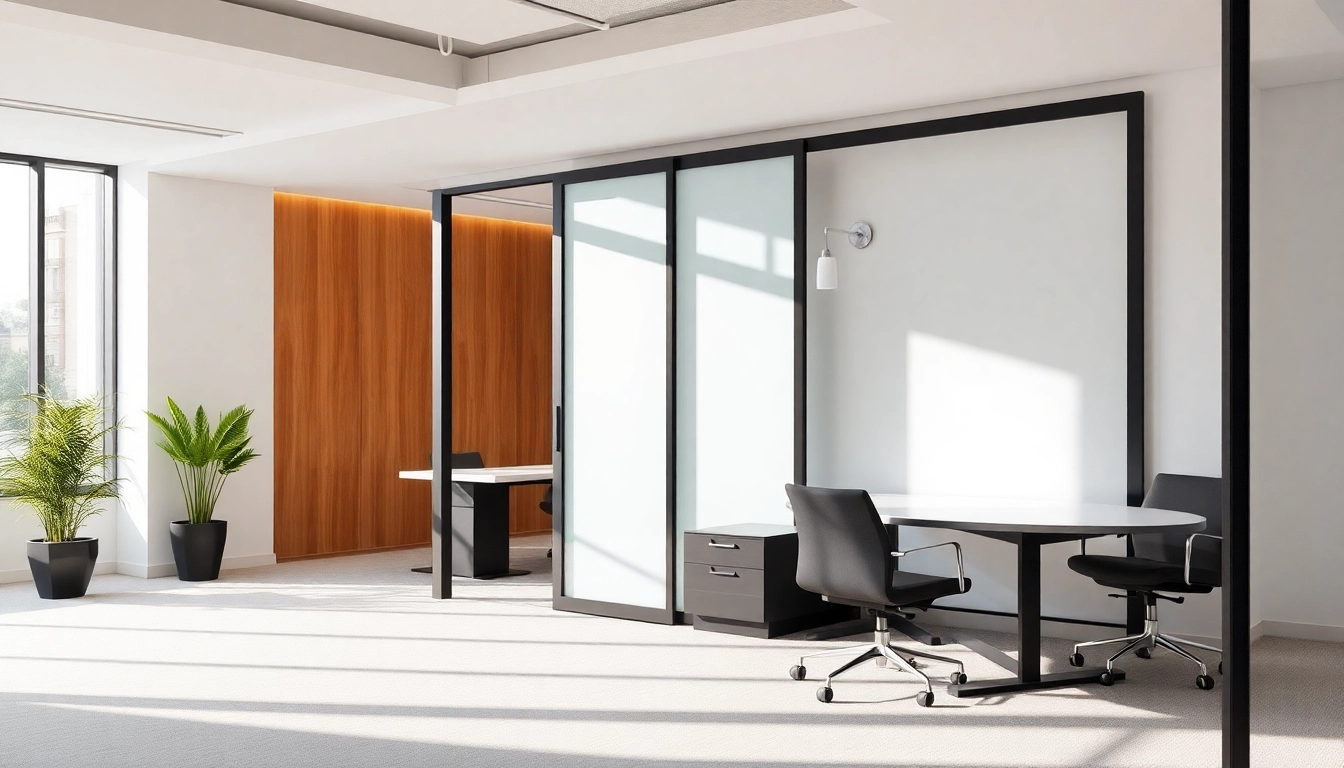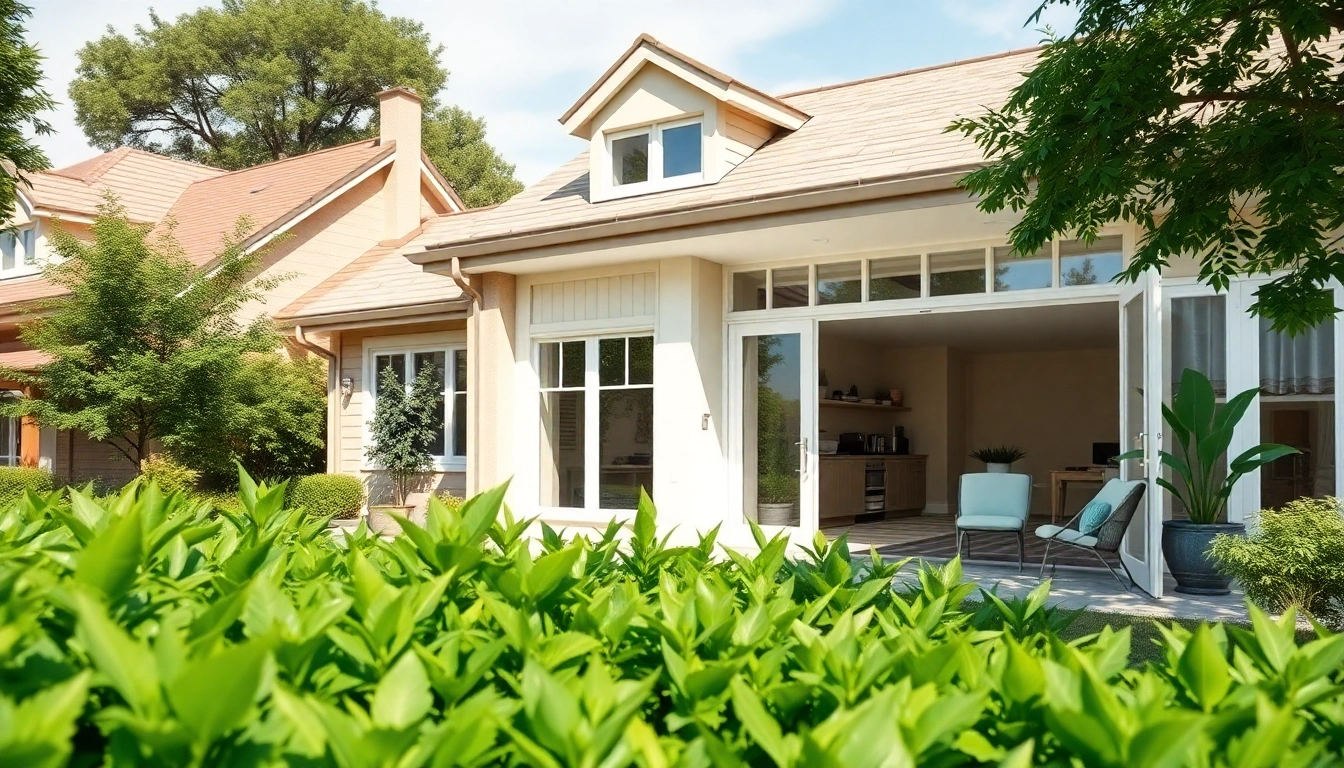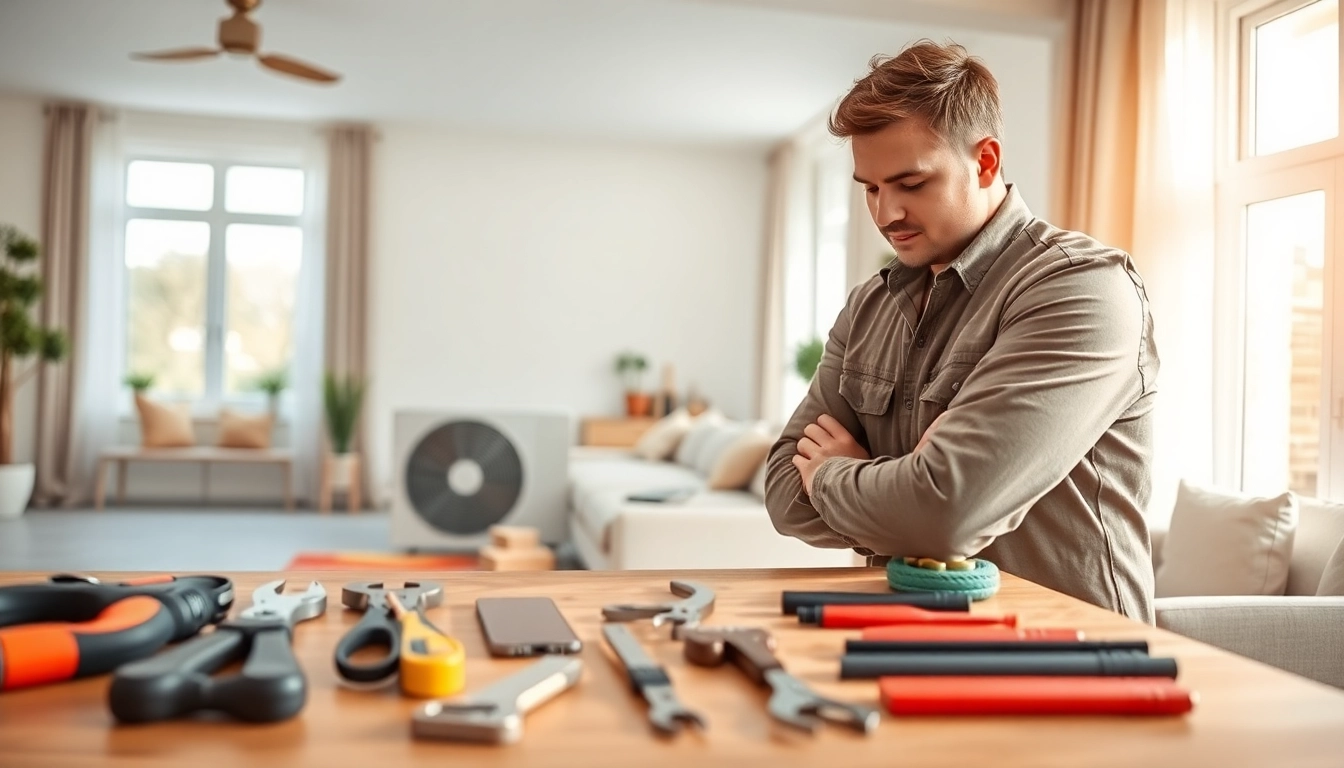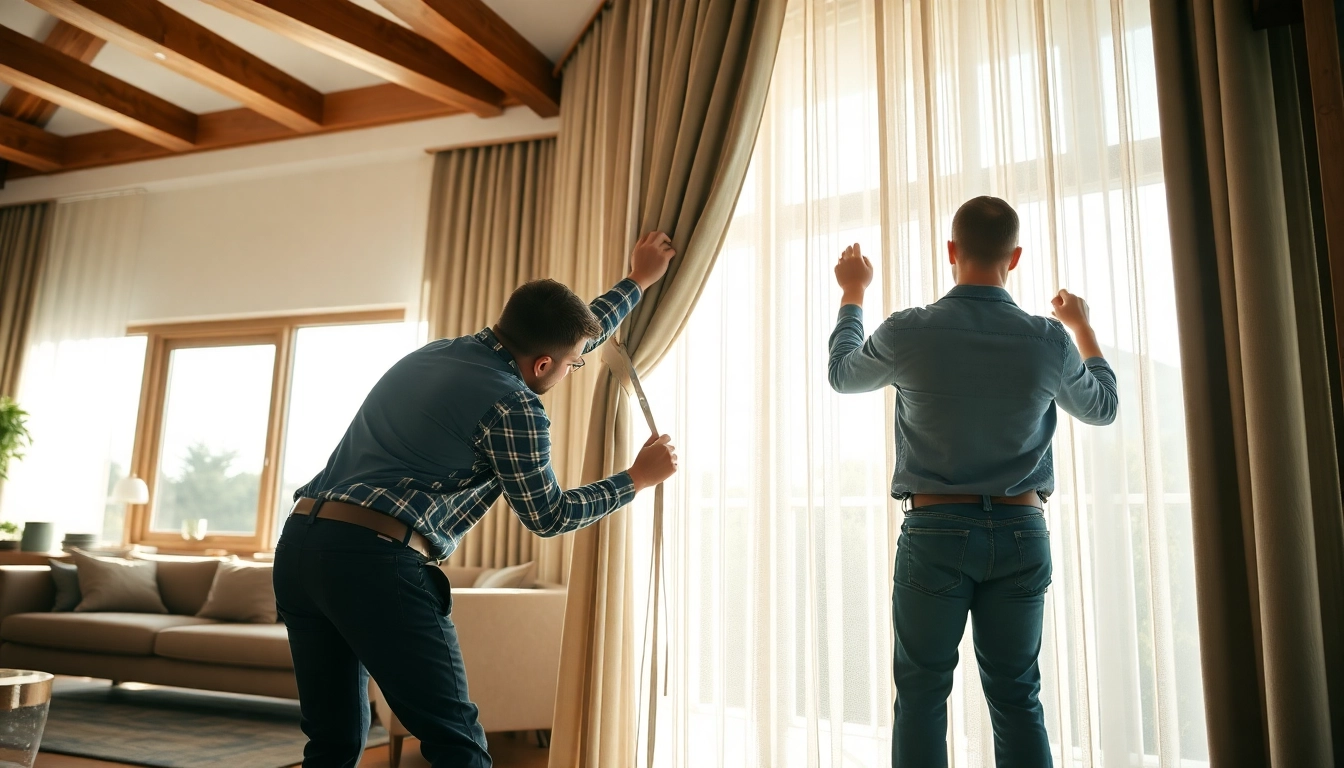Introduction to Sliding Partition Walls
As spaces evolve to meet the demands of modern living and working, the need for flexible design solutions has never been greater. Enter the sliding partition wall, a transformative architectural element that redefines how we use indoor environments. Sliding partition walls allow for swift reconfiguration of spaces, enabling users to adapt their environments to various needs—be it for privacy, functionality, or aesthetic appeal. This article delves into the multifaceted aspects of sliding partition walls, exploring their benefits, design options, installation processes, comparisons to traditional partitions, and real-world applications.
What is a Sliding Partition Wall?
A sliding partition wall is a movable wall system that allows for the division of larger spaces into smaller, more manageable areas. Unlike traditional fixed walls that require extensive construction and are permanently installed, sliding partition walls can be retracted or extended as needed. This feature facilitates the quick transformation of spaces, from open layouts conducive to collaboration to closed settings suitable for more focused activities.
Benefits of Using Sliding Partition Walls
The growing popularity of sliding partition walls can be attributed to their numerous benefits:
- Versatility: Sliding partition walls offer unparalleled flexibility, allowing spaces to be reconfigured for various activities without the commitment of permanent walls.
- Space Optimization: They allow for optimal use of available space, making them ideal for small apartments, offices, or conference rooms.
- Cost-Effectiveness: They can often be less expensive than traditional construction methods, especially when considering costs associated with material, labor, and time.
- Stylish Solutions: With countless design options available, sliding partition walls can enhance the aesthetic appeal of any environment, seamlessly integrating into existing décor.
- Sound Control: Many sliding partition systems are designed to reduce noise transmission, creating quieter spaces ideal for concentration or relaxation.
- Quick Installation: Compared to traditional walls, sliding partition walls can often be installed quickly and with minimal disruption to the existing space.
Common Applications for Sliding Partition Walls
Sliding partition walls have a wide range of applications across different sectors:
- Residential Spaces: In homes, they can be used to create temporary guest rooms or to separate living spaces in open floor plans.
- Commercial Offices: In corporate settings, they allow for fluid work environments that can easily adapt to changing team sizes or project needs.
- Event Venues: Facilities hosting events can utilize sliding partitions to create multiple event spaces or breakout rooms.
- Educational Institutions: Schools and universities can use them to create versatile classrooms that can flexibly accommodate different teaching styles or group sizes.
- Healthcare Facilities: Sliding partitions can help organize care spaces to provide privacy for consultations or treatments without the need for permanent structures.
Design Options for Sliding Partition Walls
Materials and Styles Available
When it comes to materials, sliding partition walls offer a plethora of options, each contributing a unique style:
- Wood: Wooden sliding partition walls bring warmth and classic beauty to a space. They can be stained or painted to match any decor.
- Glass: Glass panels offer transparency, allowing light to flow while still defining a space. They are ideal for environments where maintaining an open feel is important.
- Fabric: Soft fabric panels can be used to add texture and color while offering acoustic benefits. They are easily changeable for quick updates to the space’s look.
- Metal: For a modern, industrial aesthetic, metal partitions can provide durability and a striking appearance.
Innovative Design Features
Innovative features enhance the functionality and appeal of sliding partition walls:
- Track Systems: Modern systems utilize advanced track designs that allow for smooth operation and reduced wear over time.
- Acoustic Panels: Many partitions come equipped with sound-absorbing materials, improving acoustic performance and creating quieter spaces.
- Automated Systems: For added convenience, automated sliding systems can be integrated, allowing users to open or close walls at the touch of a button.
- Custom Designs: Numerous companies offer customization so that users can create unique solutions tailored to their specific needs and preferences.
Customizing Your Sliding Partition Wall
Customization is a key aspect of sliding partition walls, enabling individuals and businesses to tailor their solutions:
Considerations for customization include:
- Dimensions: Measure the space where the partition will be installed to ensure a perfect fit.
- Color and Finish: Choose finishes and colors that coordinate with your existing decor or make a bold statement.
- Panel Configuration: Decide how many panels are needed, as well as the layout (single panel or bi-parting solutions).
- Access Features: Ensure that the system allows for easy access and operation, especially for spaces with high traffic.
Installation Process and Considerations
Preparation for Installation
Preparing for the installation of a sliding partition wall is crucial to ensuring a smooth process and effective outcomes:
Follow these steps:
- Assess the Space: Determine the suitability of the wall for your needs, including weight-bearing properties and space constraints.
- Gather Tools: Ensure you have all the necessary tools, including a level, drill, screws, and a measuring tape.
- Read Instructions: Familiarize yourself with the manufacturer’s instructions to ensure you understand the assembly and installation process.
Step-by-Step Installation Guide
While it’s advisable to seek professional help for installation, DIY enthusiasts can follow these general steps:
- Measure and Mark: Measure the area where the track will be installed, marking the spots for brackets and the top track placement.
- Install the Track: Using a drill, secure the track to the wall and ceiling in the marked locations, ensuring it is level.
- Add Panels: Attach the sliding panels to the track according to the manufacturer’s instructions.
- Test Functionality: Slide the panels back and forth to ensure they operate smoothly and adjust if necessary.
Maintenance Tips for Longevity
Maintaining sliding partition walls is vital for ensuring durability and functionality:
- Regular Cleaning: Dust and clean the panels regularly to maintain aesthetics and function. Use appropriate cleaners based on the panel material.
- Inspect Tracks: Periodically check the track system for any debris or wear and lubricate moving parts as needed.
- Monitor Operation: If you notice sticking or unusual noises, inspect the installation for any misalignments or issues that need addressing.
Comparing Alternatives: Sliding vs. Traditional Partition Walls
Cost-Effectiveness of Sliding Partition Walls
When evaluating project budgets, sliding partition walls often emerge as a more cost-effective option. Traditional partitions require significant construction resources, including labor and materials, which can drive up costs considerably. Sliding partitions, especially prefabricated options, can reduce installation time and associated costs, allowing for economic savings.
Space Utilization and Flexibility
Sliding partition walls excel in space utilization. While traditional walls create fixed divisions, sliding panels can be moved to create large, open spaces when necessary. This flexibility supports a range of activities, from meetings to casual gatherings, making them ideal for environments that require adaptability.
Acoustic Performance Comparison
Acoustic performance may vary between sliding and traditional walls. While traditional walls can block sound effectively, many modern sliding partition systems are engineered with soundproof materials that mitigate noise transmission, allowing for privacy and quietness in varied environments. These systems provide solutions for both flexibility and sound attenuation.
Customer Perspectives and Case Studies
Real-Life Applications of Sliding Partition Walls
Customer experiences highlight the effectiveness of sliding partition walls in diverse applications:
For example, a startup in a co-working space utilized sliding partitions to create fluctuating meeting rooms, adapting to the varying size of teams. Users found that they increased productivity while giving employees the necessary privacy to focus.
Customer Testimonials and Reviews
Feedback from customers emphasizes the value added by sliding partition walls:
One user noted, “The sliding partition wall in our home office has transformed my workspace. It’s allowed for more flexible use of space while providing just the right amount of privacy when needed.” Such testimonials underline the strengths of sliding partitions in addressing customer needs for organization and efficiency.
Future Trends in Partition Solutions
The future of sliding partition walls looks promising with advancements in technology and design:
Anticipated trends include:
- Smart Technology Integration: Smart systems that can be controlled via apps for seamless operation.
- Eco-Friendly Materials: Increased use of sustainable materials that meet modern environmental standards.
- Increased Customization: A trend towards personalized design that reflects individual tastes and functional needs.




